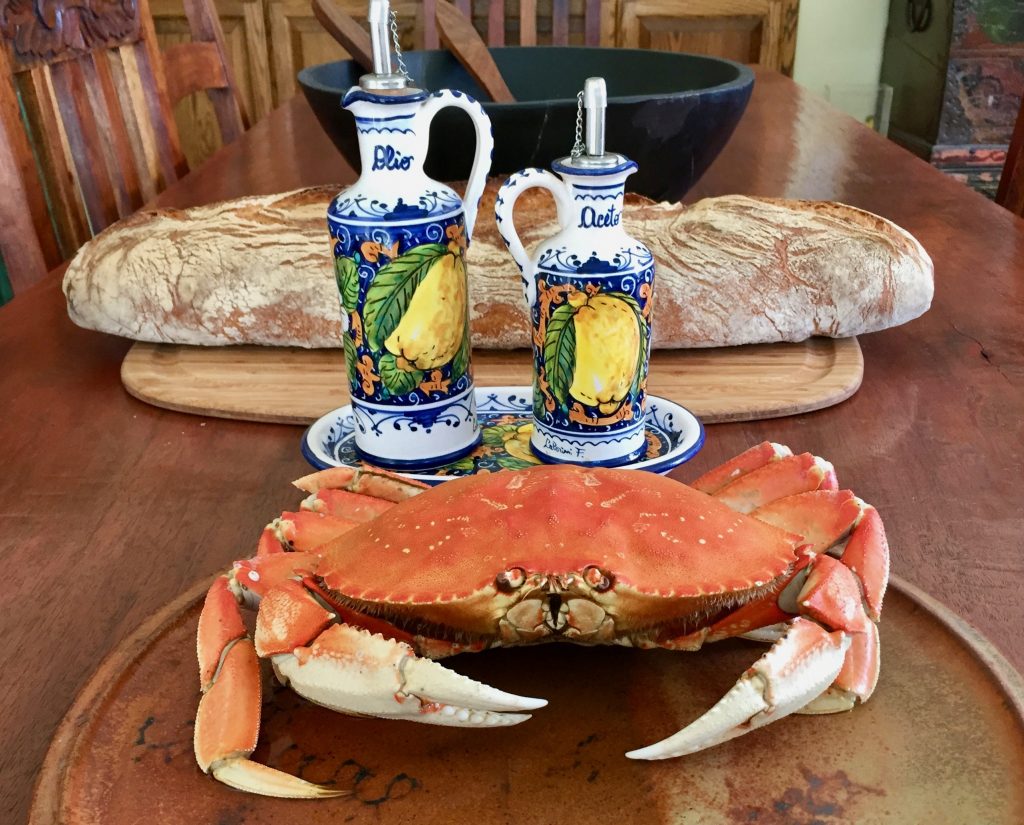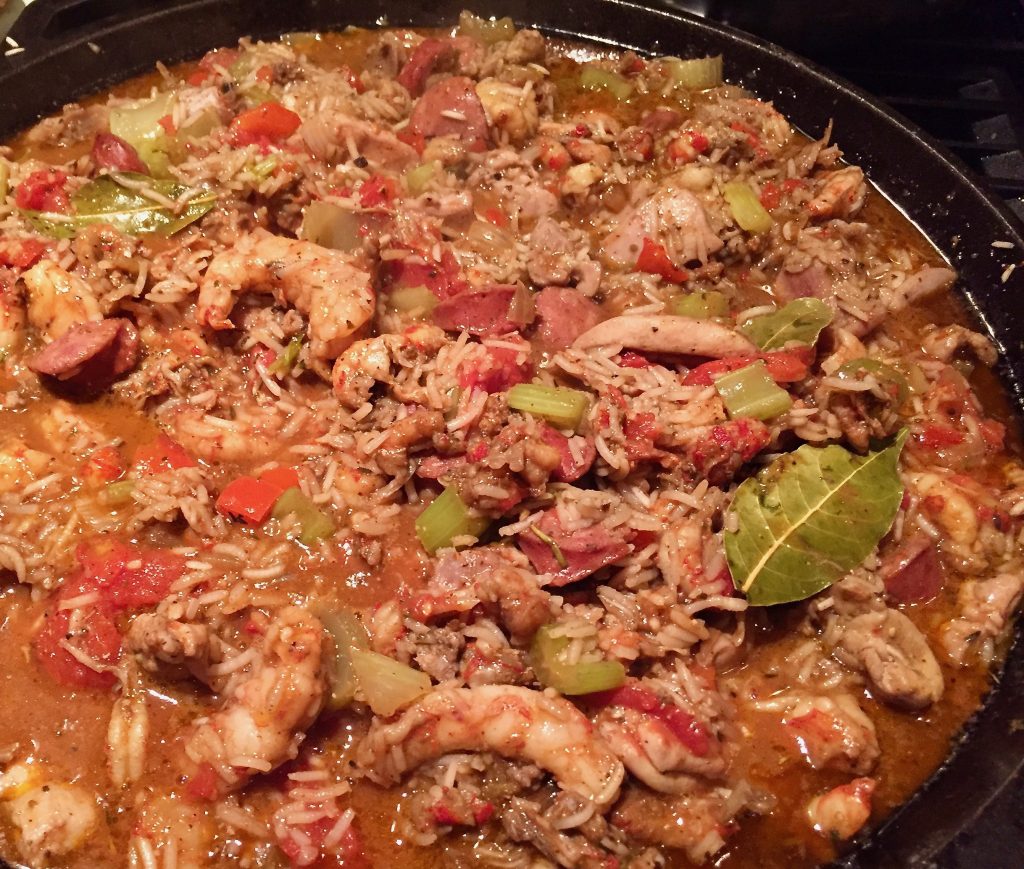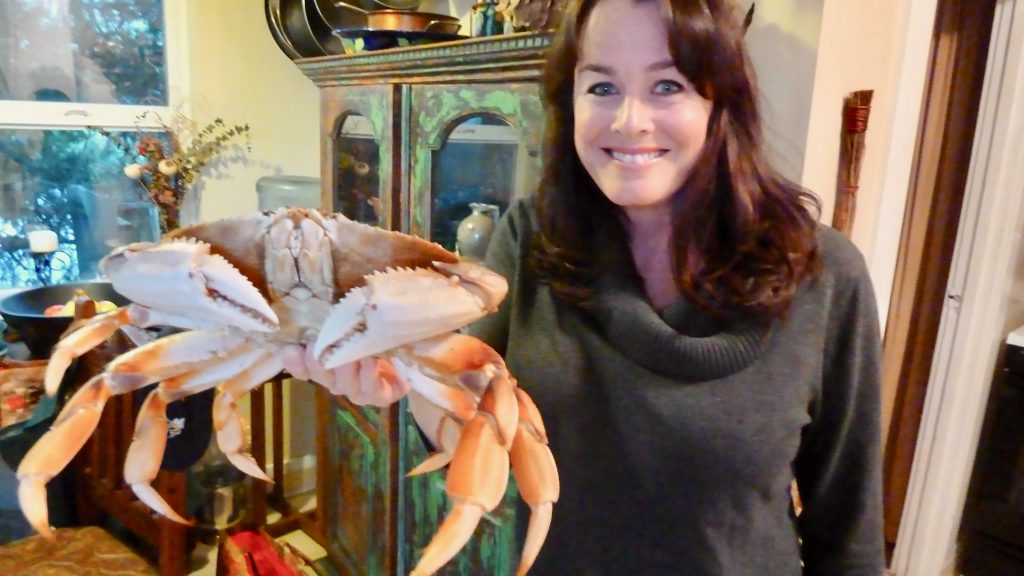
Jambalaya is illusive at its heart. It is, in essence, a rice meal… but that’s just the canvas the Creoles and the Cajuns use to paint one of their masterpieces. The rice is there to absorb all the umami juices of the meats and shellfish and seasoning, and in some ways, this meal is the coming together of the two traditional factions of the Cajun people, the Rice Cajuns and the Bayou Cajuns. The Rice Cajuns are those folks who, early on in their resettlement, were able to acquire slightly higher land in the interior, on which rice flourishes. For the folks living on these farms, pork and chicken were just as likely to be on the dinner table as Mud Bugs, turtles and shrimp, which the Bayou Cajuns netted for a living. So Jambalaya is a meal that combines all the traditional strengths of the Cajun people, and finding the authentic ingredients is crucial.
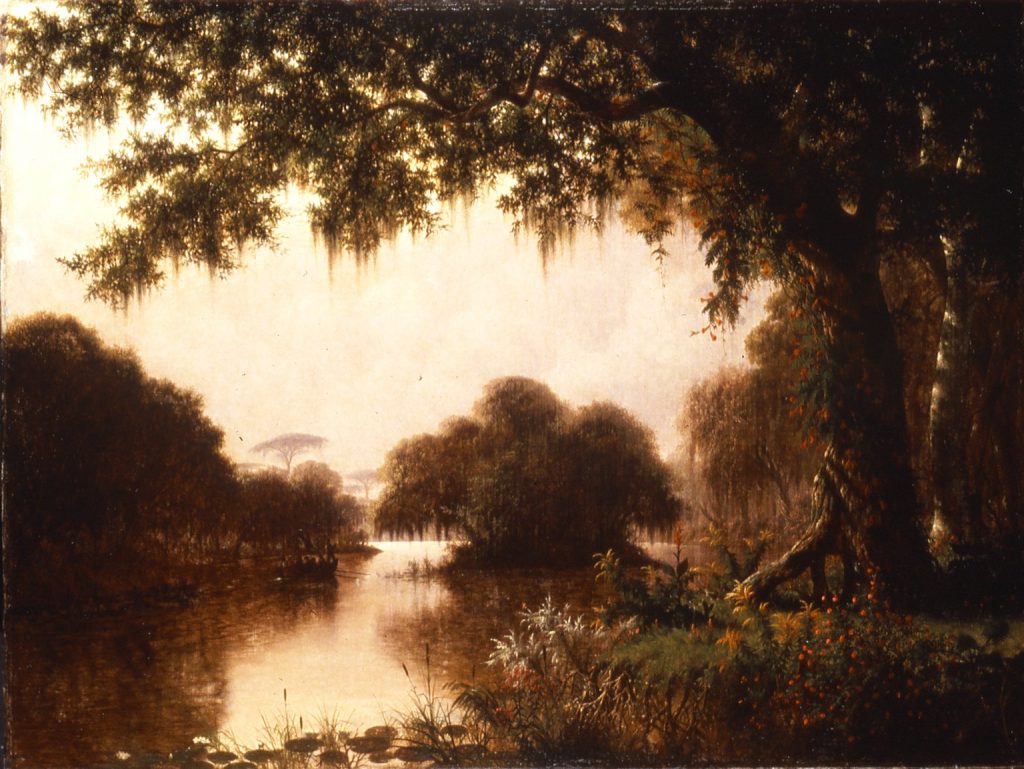
I had a close friend who was Cajun and he once took me to a small village in southern Louisiana where he grew up. It was not too far from the town of St. Martinville, famous for the statue of Evangeline, the High Priestess of myth and poetic legend among the Cajun and a powerful symbol of the Acadian diaspora. The real person’s name was Emmeline Labiche, and the truth is better than Romeo and Juliet, but that’s a story for the second cookbook.

I had written about the Cajun people in a novel so I was familiar with their culture, food and society. One reason for my passion for Cajun food is that my mother’s side of the family has roots in the French Canadian community and thus are the remnants of the Acadian people, who were cast out of their homes and lands by the English army in 1755 to wander unwanted along the Eastern seaboard of America for decades. They finally found a home in the bayous of Louisiana, so it’s completely understandable that traditionally the Cajuns are a people who wanted to be left in peace. The Cajuns have always been a traditional community, not easy for strangers to dive inside. They have their own unique ways of living, are proud of their French patois and are private in many ways… but full of life.
When my friend and I finally arrived in town about 9pm we were hungry and he took me driving deeper into the night and the swamps, until we saw lights along a little waterway. His family and friends owned this low slung cafe/roadhouse, which was right on the bayou, with a dock alongside for the shrimp boats and the fishermen that netted crayfish, which the Cajuns call Mud Bugs. It was a family place, strictly for locals, and casually featured a local family that sang songs in their French patois and played the Zydeco. It was that night that I first had real Jambalaya, and it was a revelation. No version I’ve had since comes close… (other than the Jambalaya made by Paul Prudhomme in the early years at K-Paul’s Louisiana Kitchen, more on Paul later in the Gumbo recipe). This recipe is my version of this classic Cajun feast.
The further away from the bayous and rice towns that you get, the less likely that something called Jambalaya is going be the same meal I first had that night. For one thing, almost all of the meals I’ve tasted in other parts of the country that were called Jambalaya were mostly just tomato based rice meals. Among all the combinations of foods that really aren’t very happy together, rice and tomato paste are high on that list.
The tomatoes I had that night were explosively tasty. They were not infused into the rice as a smothering paste, they were full equals to the shellfish and meats as separate tastes, not a background of over-cooked tomato paste flavored rice. The ladies who cooked it for me said that only in the winter do they need to use their own home canned tomatoes, but it’s still pretty close in freshness. And most of the rest of the ingredients arrived at the dock, which is about twenty feet from the kitchen… along with the always completely indispensable Andouille and Tasso sausage.
But my main memory of that night is this… I was accepted and embraced with complete open arms and generosity, with an easy old-soul accepting grace. It was like coming home, to the home one always imagined, without the constraints of time, societal restrictions, or any facade at all. When we had talked and laughed and danced and eaten all we could, and were about to leave, the ladies who owned this cafe, and who cooked all the meals, brought to me a huge container of gumbo. All night I had been pretty talkative in my admiration of their Jambalaya and Gumbo so they took the time to teach me whatever I wanted to know about these singular meals, about making roux for Gumbo… and how to turn shellfish, sausage, seasonings and tomatoes into the feast called Jambalaya.
No matter how hard I tried to convince them that it was far too generous a gift, and that I just couldn’t accept a tub of the best food in the world, they gently made it clear that I was going to take it with me on a plane back to LA. It was like them sending me off with a life raft in a stormy sea… which possibly seemed, to them, the outside world. I will never forget these beautiful folks who, like the line from the song Proud Mary, are a people who are happy to give. And they have given us a feast called Jambalaya.
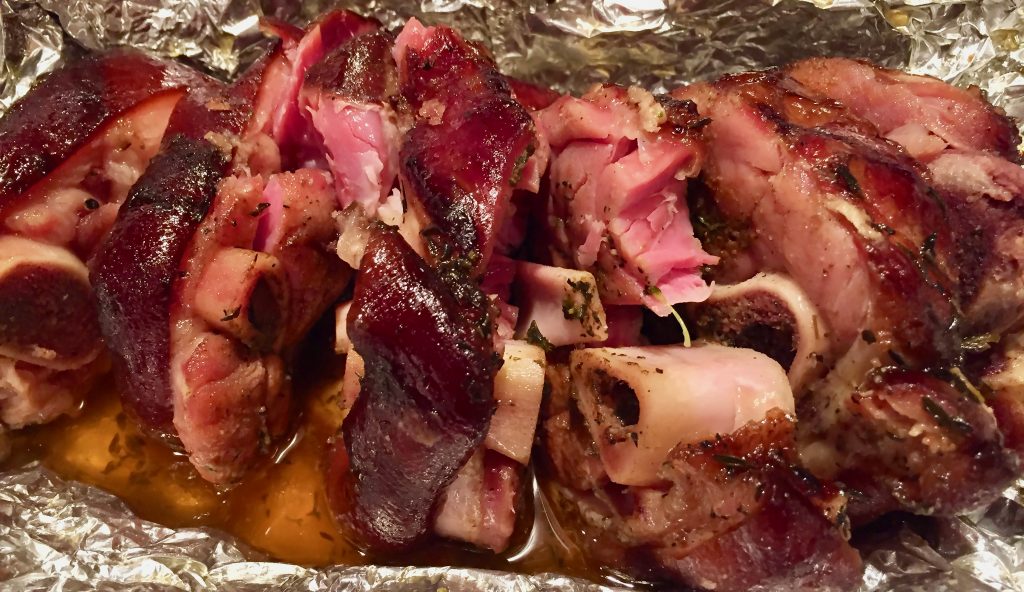
Home Made Tasso flavor made from ham hocks.
Ingredients
1 pound shrimp, peeled, the shells boiled for broth (we use only Gulf shrimp)
1 whole crab… because it looks awesome
2 pounds boneless skinless chicken thighs, free range, air chilled
1 pound crawfish, langostino or oysters
1 pound smoked Andouille sausage, cut into thick coins (Italian sausage works)
1/2 pound Tasso Cajun sausage (or smoked ham hocks or shoulder, roasted with 1/3 of the Cajun seasoning)
1 large sweet onion, diced
1 large red bell pepper, diced
5 stalks celery, sliced thick
5 large garlic cloves, crushed
1 large can of Roma tomatoes, including the sauces (we use San Marzano tomatoes from Italy)
1/2 cup olive oil, (we often use 1/4 cup olive oil and 1/4 cup duck fat)
2 ounces unsalted butter
1 tablespoon Worcestershire sauce
2 cups chicken broth (we boil down the bones of an entire rotisserie chicken to finally arrive at 2 cups rich broth)
2 cups broth from of the boiled down shells of shrimp, crab, crawfish or lobster, or 2 cups clam broth
2 cups long grain white rice
5-6 Bay leaves
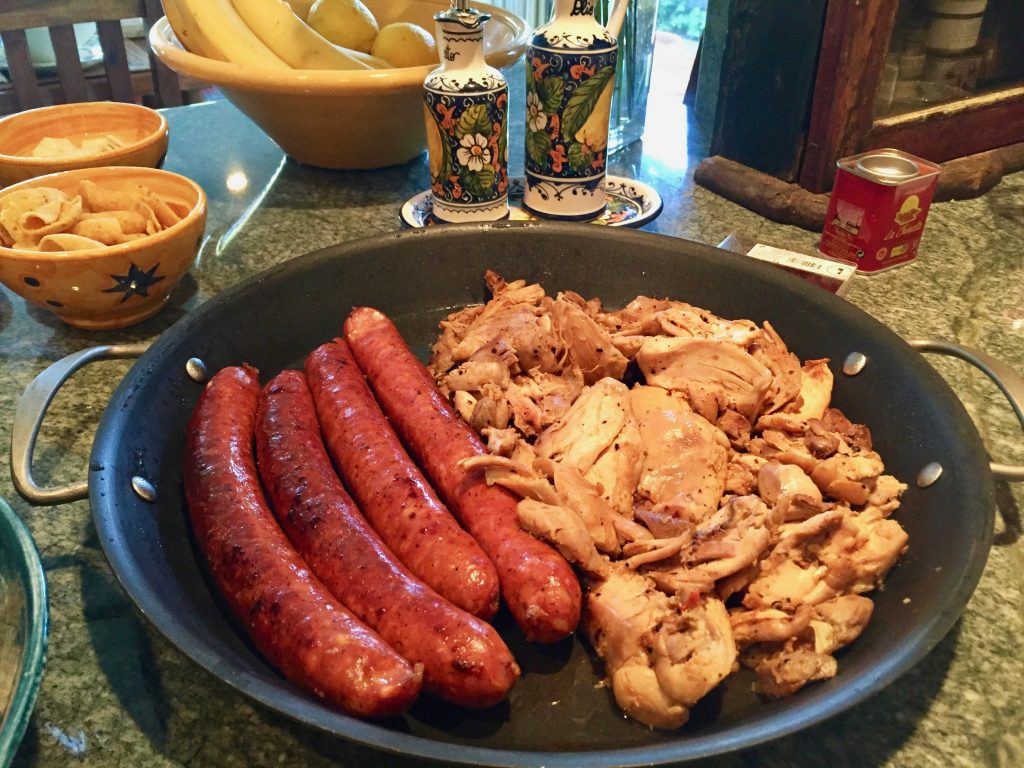
Cajun Seasoning
2 teaspoons Gumbo file’ powder
2 teaspoons Cayenne pepper (if you like it hot)
1 teaspoon smoked hot Spanish paprika
2 teaspoons dried oregano
2 teaspoons dried thyme leaves
2 teaspoons salt (if you use smoked meats, which are heavily salted, then use 1 teaspoon, to taste)
2 teaspoons black pepper, crushed
1 teaspoon ground cumin
2 teaspoons dry mustard powder
2 teaspoons white pepper, ground
Tasso sausage is traditional and uniquely flavored, but not easy to get. You can order it from a sausage maker in Louisiana or make it yourself.
Another choice is to use smoked ham hocks or shoulder… have the butcher use his saw to make an accordion cut and sprinkle 1/3 of the Cajun seasoning in all the cuts and roast at 350 for an hour and a half. Allow to cool, pick out all the meats and cut into pieces.
Cooking
Salt and pepper the boneless chicken thighs and cut them into 1 1/2 inch chunks. In a 12 to 14 inch cast iron pan, warm up half the olive oil and duck fat, crush in half the garlic, add the chicken, sprinkle on 1/3 of the Cajun seasoning and fry the chicken until seared… about five minutes.
Add the sausage and fry until the chicken is 2/3 cooked, and then remove the meats, cover and set aside.
In a big bowl, using your hands, combine all the shellfish and sprinkle on 1/3 of the Cajun seasoning, mixing well. In the same pan as before, gently fry the shellfish on low heat until the shrimp just starts to plump and absorb all the seasoning… and then remove, cover and put aside.
In the same pan, warm up the rest of the olive oil and duck fat, crush the remaining garlic into the warm oils and heat until the garlic melts in. Increasing the heat, saute´ the uncooked, rinsed rice, stirring constantly, until slightly browned and coated with seasoned oils, about five minutes. Remove the rice and set aside.
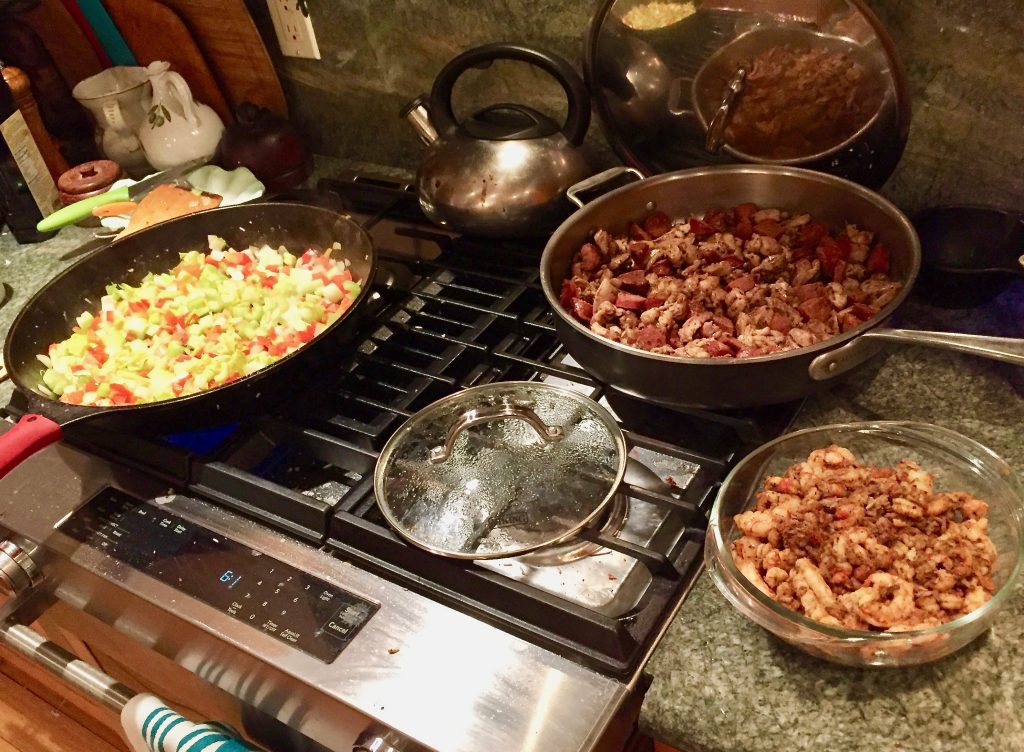
In the same big pan, add the 2 ounces of butter and saute´ the onions until opaque. Add the bell peppers, celery, and the rest of the Cajun seasoning and sauce until they are just softened, about 10 minutes… and some crab legs just for fun.
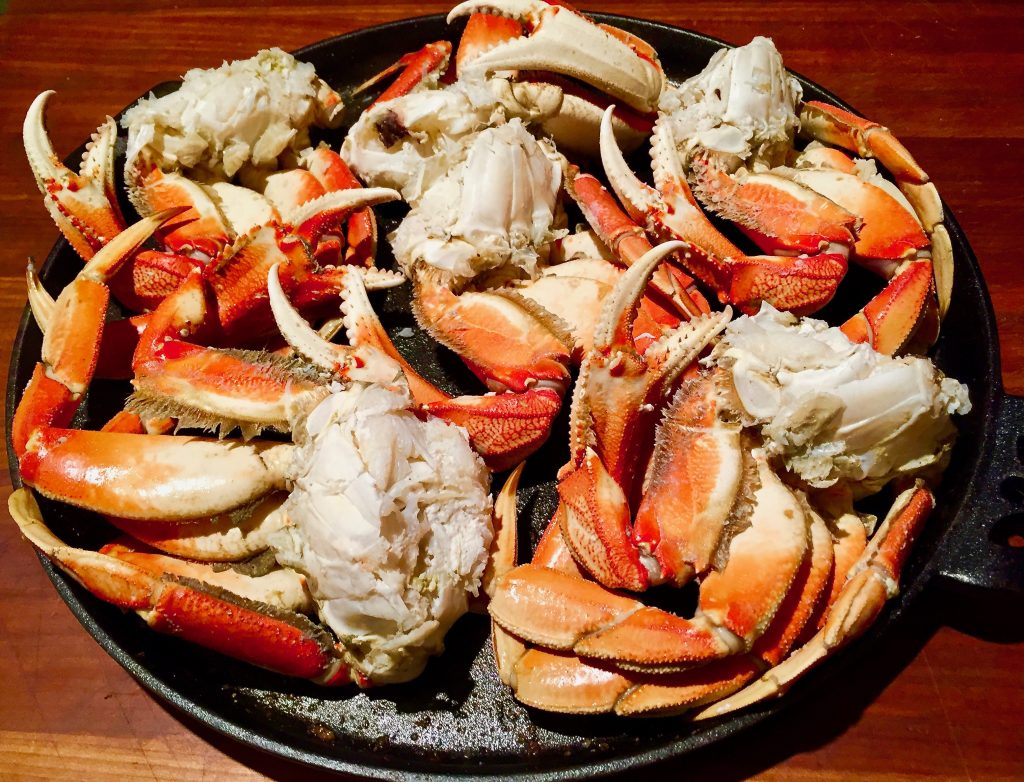
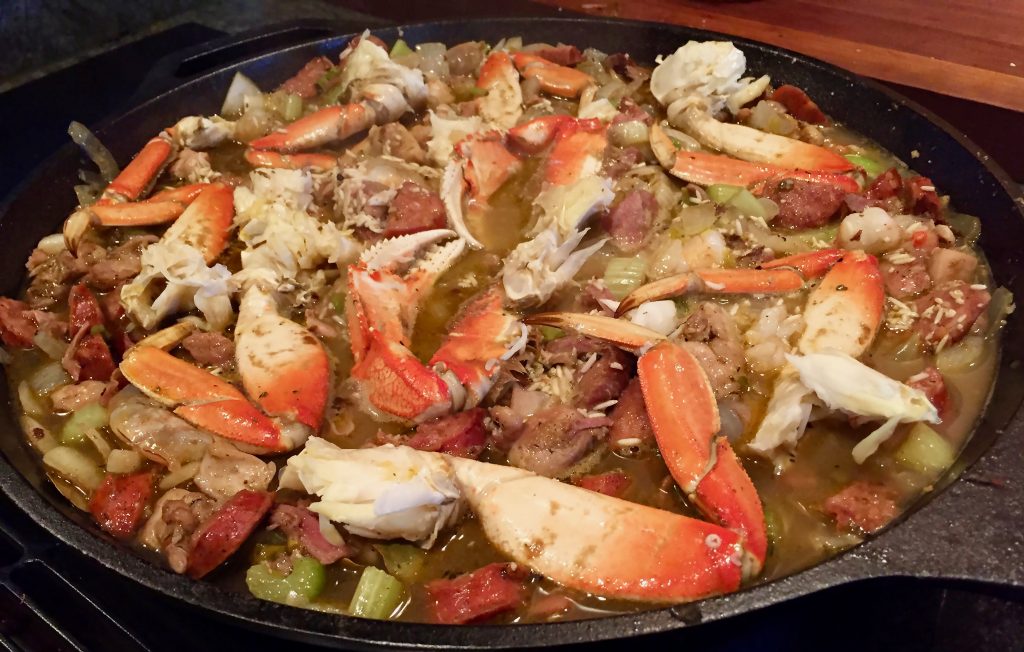
Add back the rice and meats, stir in all the broth, Worcestershire sauce and Bay leaves. Be sure to scrape all the crust off the bottom of the pan, that’s where the deep flavors and patina are.
Simmer on low to medium heat with the lid off until the rice has absorbed the broth but is still slightly crunchy, about 15 minutes.
Now add the shellfish and tomatoes and simmer for 5 minutes until they are married.
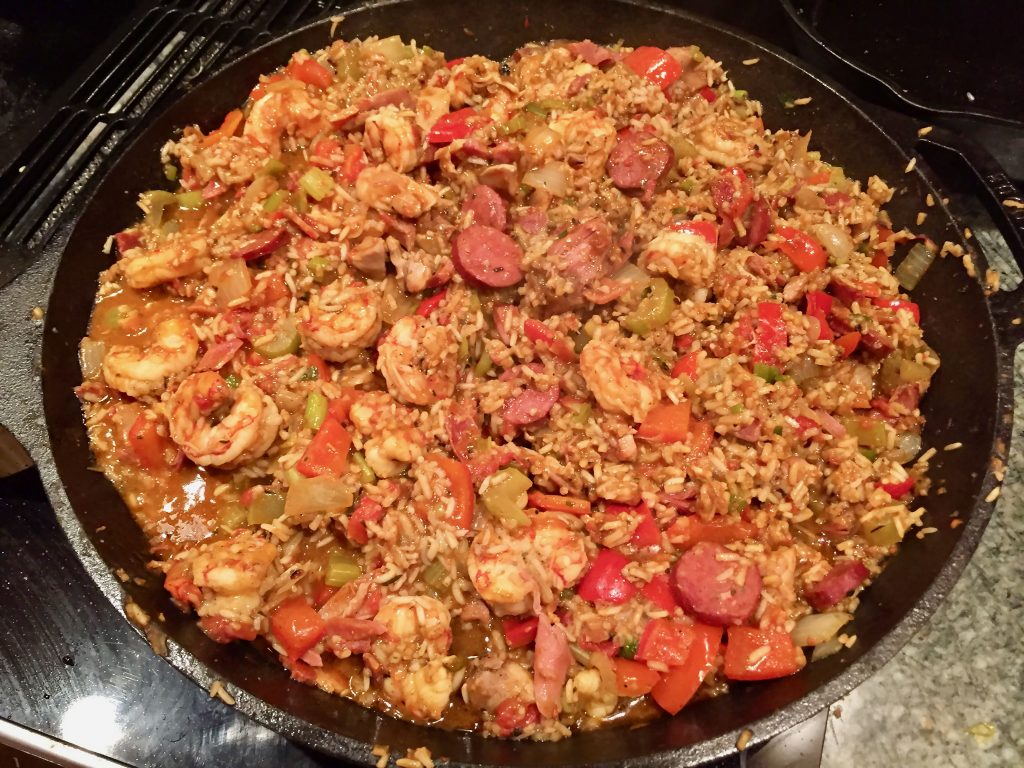
Turn off the heat, cover and allow to cool, about 5 minutes. Serve with Cajun Zydeco music playing loud in the kitchen.
Ca c’est bon!
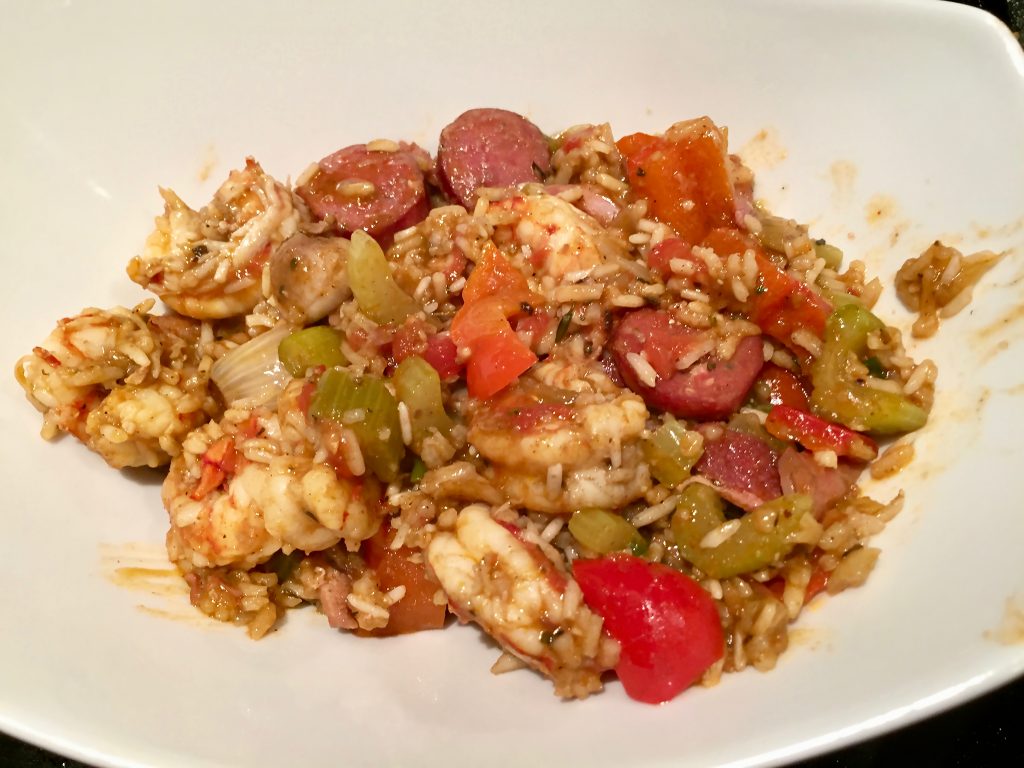
Where we live along the Monterey Bay, there are abundant seasons of Dungeness crabs. We will often break up the crab into legs and claws and decorate Gumbo and Jambalaya with them. It’s always a crowd pleaser. And toasted crusty bread, along with cold beer, completes the feast.
